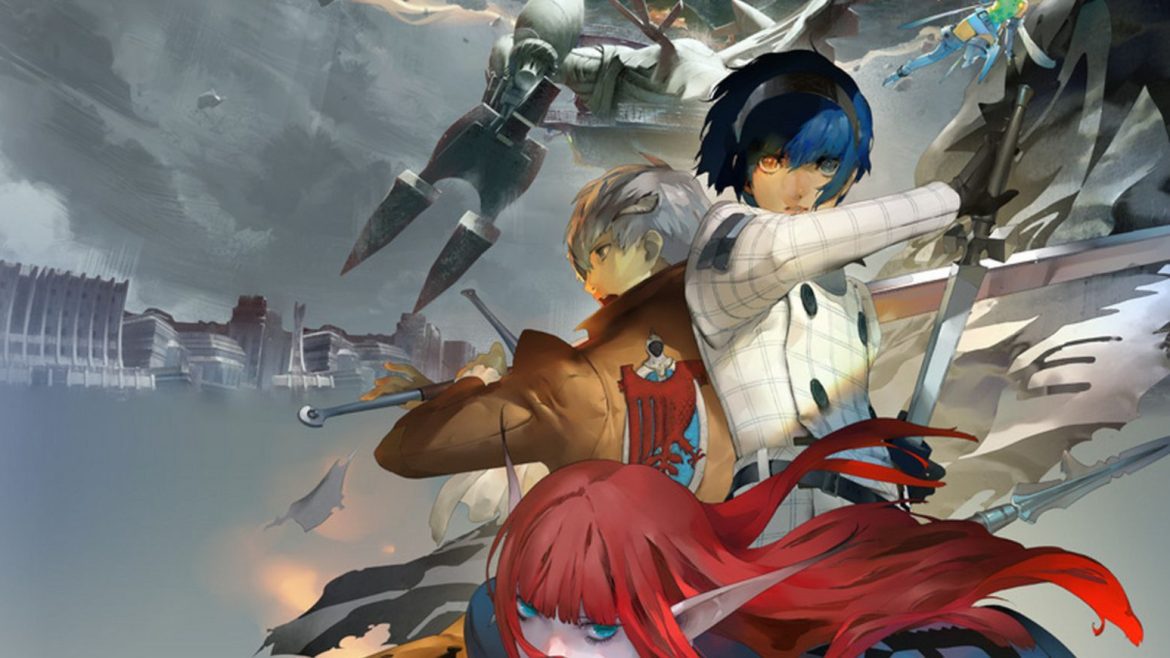Metaphor: ReFantazio – The writer’s childhood, like many gamers of the 8X generation, was associated with classic JRPG (Japanese role-playing game) titles such as Final Fantasy, Fire Emblem or Dragon Quest, but if we had to mention a name that left the deepest impression, it could only be Shin Megami Tensei – a long-standing but little-known brand of the publisher Atlus.
With the original concept based on the scenario of the fantasy novel Digital Devil Saga, all the “mainstream” Shin Megami Tensei titles, including the offshoots like Shin Megami Tensei: Devil Summoner, have in common a dark setting, somewhat bizarre character designs, and a difficulty level so “hardcore” that many have compared them to the “Dark Souls” versions of the JRPG genre.
That is why this brand is still quite “picky” about its players and has not really broken out of the domestic market.
There is only one Persona spinoff game series, especially Persona 5, that has made a big breakthrough by adding the element of “time management” and the feature of “building relationships with characters” (social simulation).
The success of Persona 3, 4 and 5 not only brought fame and huge profits to Atlus and the development team P-Studio (the predecessor of Studio Zero later – NV), but also shaped the “standard” for anime-style JRPGs with turn-based gameplay until today.
The appeal of Persona is so great that it not only overshadows the “mother” game series, but Persona 5 alone has also created many “follow-up” products such as Persona 5 Striker, Persona 5: Dancing in Starlight, Persona 5 Tactica, Persona 5: The Phantom X, not to mention a series of anime adaptations and the guest appearance (cameo) of the main character Joker in Super Smash Bros Ultimate.
As a “hardcore fan” of this game series, the writer feels very excited but also a bit worried when feeling that Atlus is… “milking” their existing products too much, without investing in new projects.
For example, the sequel to Persona, Persona 6, has been almost… 8 years since the 5th version was released but there is still no sign of it.
However, Atlus still has another “trump card” that they have cherished for a long time called Project Re Fantasy, a special project that not only celebrates the 30th anniversary of the Shin Megami Tensei brand but also brings together the talented trio behind the success of Persona: director Katsura Hashino, artist Shigenori Soejima and composer Shoji Meguro, promising to bring a breakthrough when this team first embarks on a game with an epic fantasy medieval setting.
Despite being quiet for a long time after its announcement in 2016, Project Re Fantasy suddenly returned last year with the official name: Metaphor: ReFantazio , and then quickly reached the milestone of 1 million copies sold in just the first day on the shelves, becoming the best-selling game in the history of Atlus.
What made that miraculous breakthrough? Let’s find out the truth with MarkGame!
YOU WILL LIKE
An emotional journey
The first impression of the writer when entering the magical, shimmering world of epic fantasy of Metaphor: ReFantazio is a bold innovation, just as director Katsura Hashino once stated, he wanted this project to be completely different from what he and his colleagues at Studio Zero had done before.
No longer following the familiar formula: the script revolves around a cast of characters who are high school students in Japan facing dangers from modern society to supernatural forces, Studio Zero still succeeds in creating a sophisticated, engaging story, along with a meticulously built and vivid world.
Metaphor: ReFantazio also offers a more mature and in-depth perspective when exploring the issue of class division, while cleverly incorporating metaphors (as the game’s name suggests, “Metaphor”) to subtly convey the message about racism.
The game is set in the kingdom of Euchronia, home to eight races with distinct physical characteristics, personalities, and social status.
The Clemar clan, with horns on their heads and sharp minds, held political power and made up the majority of the royal family, so they were considered the upper class.
The Roussainte tribe, with their long pointed ears (similar to the Elves in The Lord of the Rings ), are known for their physical strength, and hold important positions in the military and law enforcement.
On the contrary, weak races such as the Paripus dog-men or the Eugief bat-hybrid race, despite their large numbers, have a peaceful lifestyle and different appearance, are considered to be of the lower class and suffer many disadvantages in society.
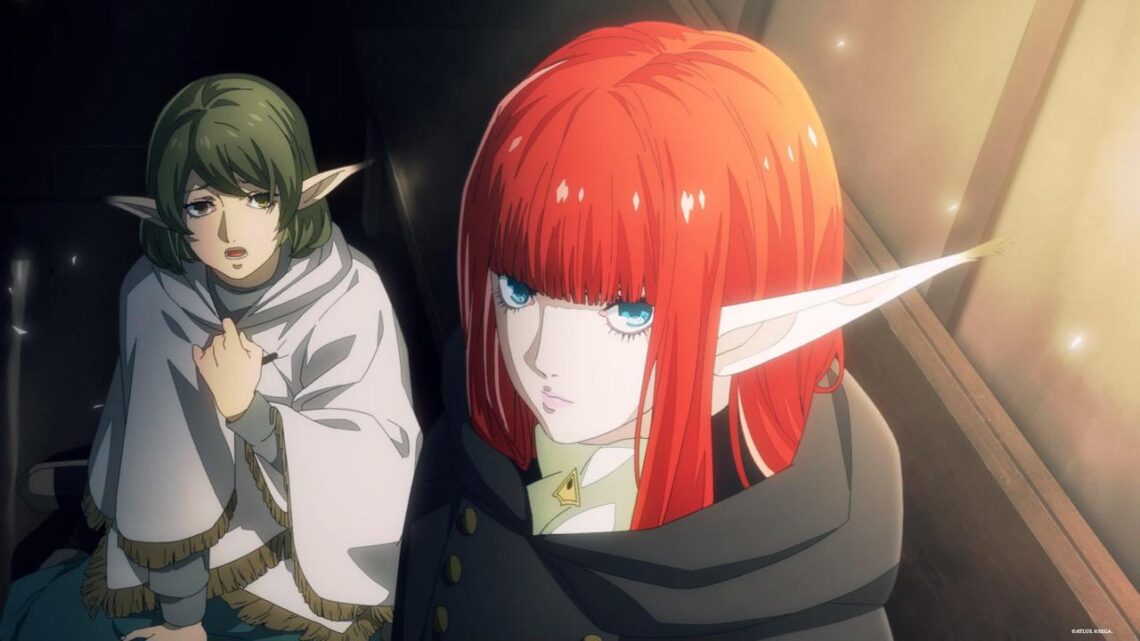
This division was so deep that many people could not find jobs, were not respected in the army, and were even shunned and banned from appearing in solemn places such as churches and royal palaces.
The story begins when King Hythlodaeus V is suddenly assassinated, plunging the entire kingdom into chaos. While the royal forces are fighting for power, a strange event occurs on the day of national mourning, a giant stone face of the King appears in the sky, announcing a tournament to find a successor. The winner will be determined based on the support of the people, regardless of status or ethnicity, creating opportunities for anyone in the kingdom.
The protagonist (name given by the player) is a young man from the Elda tribe, the most discriminated tribe for generations because of the “stain” of a forbidden secret magic. In order to rescue his childhood friend, he is forced to win the royal tournament, opening a great and dramatic adventure.
Throughout the game, through every detail and dialogue, Metaphor: ReFantazio not only exposes the contrasts between the fictional world and reality, between the differences in each individual’s beliefs, but also explores pain, sacrifice and pride, the core values that honor heroism, the central theme of the game.
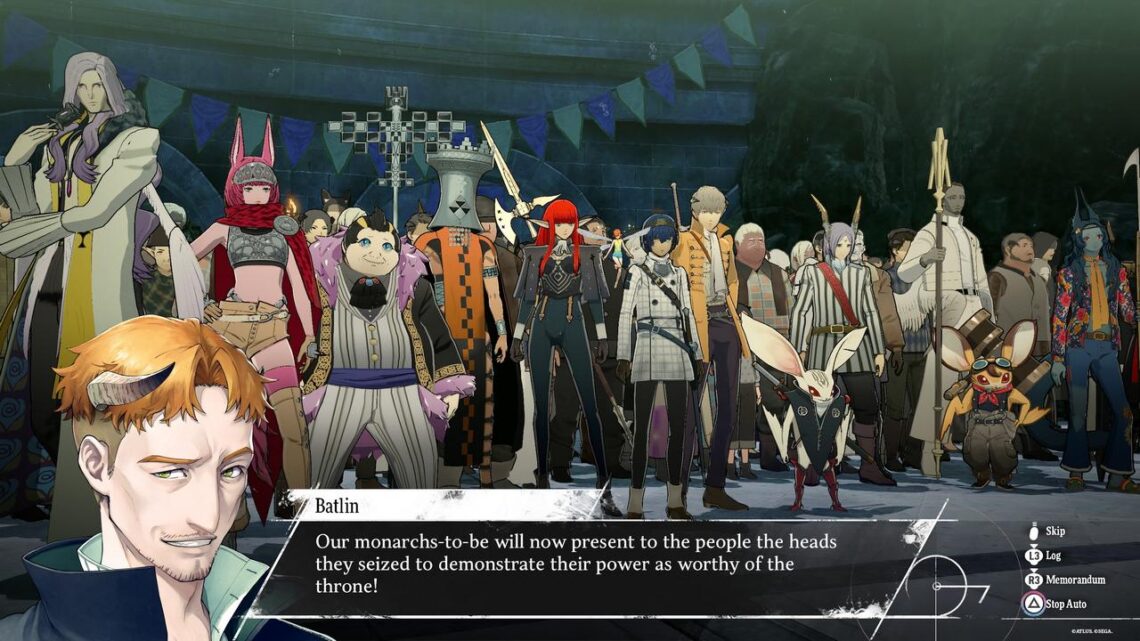
It can also be said that the journey of more than 80 hours of Metaphor: ReFantazio really evokes many levels of emotions, there are moments that make the writer pause the game to reflect, sympathize with each character in each piece of their story.
Surely you will find it hard to hold back your tears when listening to the innocent but painful lines of the little girl Maria or choking up when gradually discovering the truth about the tragedy of the life of the character Heismay, an upright knight who sacrificed himself for his country but had to helplessly witness the cruel fate of his son, just because his family was Eugief, a race with a very different appearance.
The author also takes the liberty of not “spoiling” anymore about the content so that readers can enjoy the game to the fullest.
Metaphor: ReFantazio ‘s 80+ hour journey truly evokes a range of emotions.
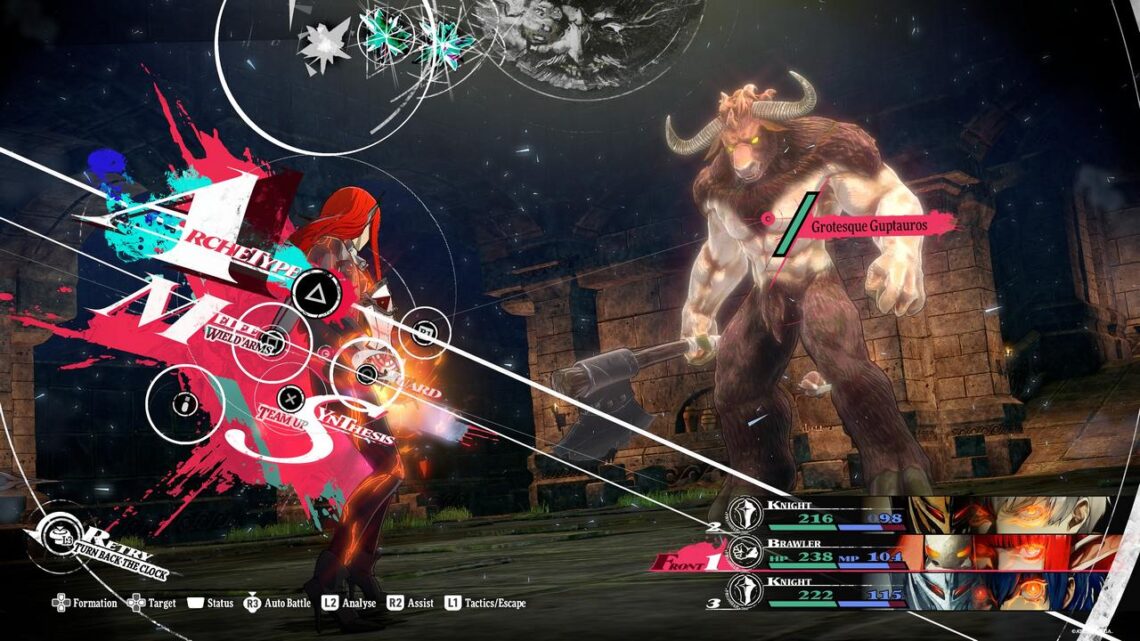
The intersection of old and new values
Metaphor: ReFantazio ‘s gameplay is a clever blend of familiar “materials” that are characteristic of the Studio Zero team’s “brand”, with unique and creative innovations.
It’s not hard to see many similarities in the game’s gameplay with Persona and the main Shin Megami Tensei games.
For example, instead of having to follow a straight path like traditional linear RPG games, the game will allow players to choose a specific day on the Calendar to “dungeon crawl” or freely do other things, as long as they ensure the completion of the goals before the deadline, which are usually the main developments in the plot.
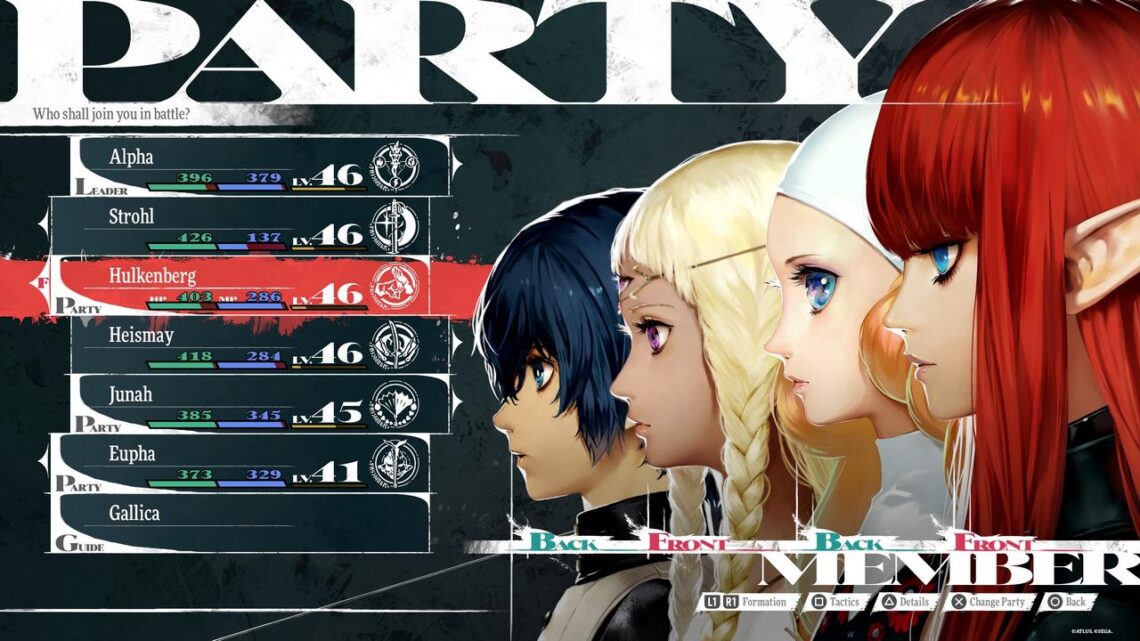
For example, if you decide to go dungeon diving during the day to do quests or grab some good loot, your party will need to rest during the evening to compensate.
On the contrary, if you spend that time participating in other activities such as confiding with teammates, helping villagers, debating in front of a crowd or simply reading a book, the main character will have the opportunity to develop internal stats such as Courage, Eloquence or Wisdom.
These stats will help “unlock” connections with Followers (special NPCs in the game, similar to Social Links in Persona) bringing extremely important benefits that the author will mention in the following sections.
It is worth noting that the design of Metaphor: ReFantazio is not limited in space and geography like the Persona games, which are usually confined to a school or a few streets. Instead, the game map expands into a huge world with many castles, villages, caves and interesting sightseeing spots.
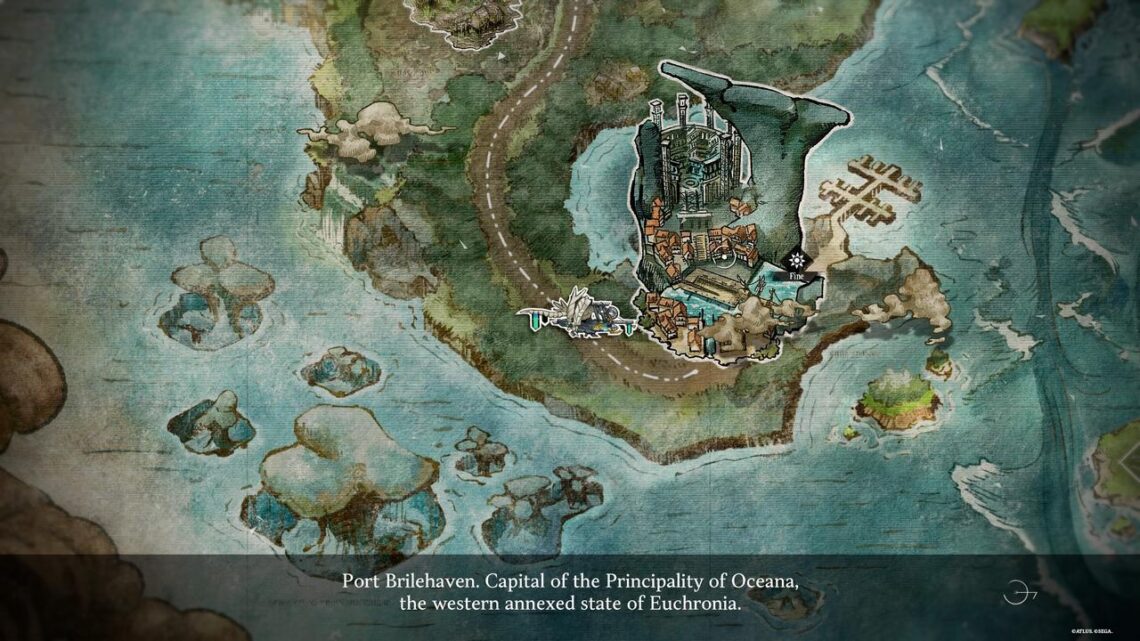
Travel between these areas will take from one to several days, via a unique transport device called the Gauntlet Runner, a compact mobile fortress with full amenities from a strategic planning area (Round Table), a break room, a kitchen to a relaxation space.
Therefore, players not only have to consider between leveling up, doing quests or developing their characters in the most optimal way, but also have to plan and arrange their time reasonably when making long trips, especially when the weather factor can also be an obstacle as many types of monsters will become more aggressive in storms.
On the other hand, the game’s combat mechanism is a unique combination of traditional turn-based combat (called Squad Battle) with a focus on exploiting opponent’s weaknesses to increase the number of hits with a completely new real-time hack-and-slash action style.
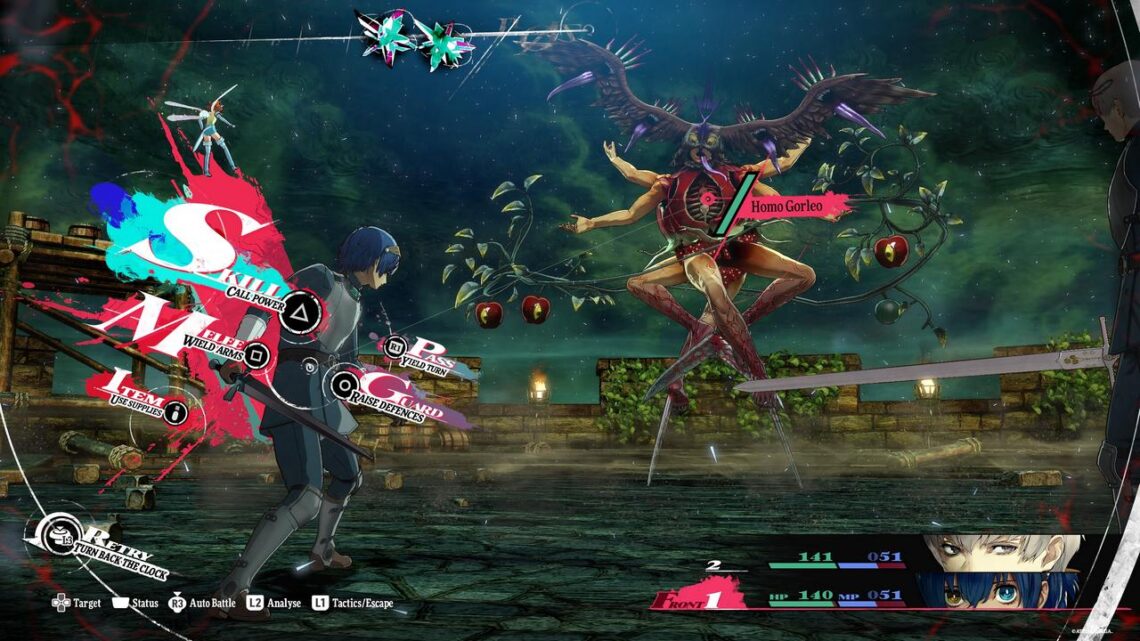
We can imagine that in Persona, mobile targets that appear on the road can be “knocked on the head” to ambush, activating a turn-based battle, but here you will be able to attack them directly with many different types of weapons, each with different attack animations. If the opponent has a lower level than the player’s character, they will be automatically destroyed immediately and the experience points using items dropped from the enemy will still be fully received.
Thanks to that, the writer saves a lot of time in “clearing away” the weak “little demons” on the map, focusing on more important targets, not to mention getting many other benefits such as recovering MP points or doubling the number of Reeve (the main currency in the game).
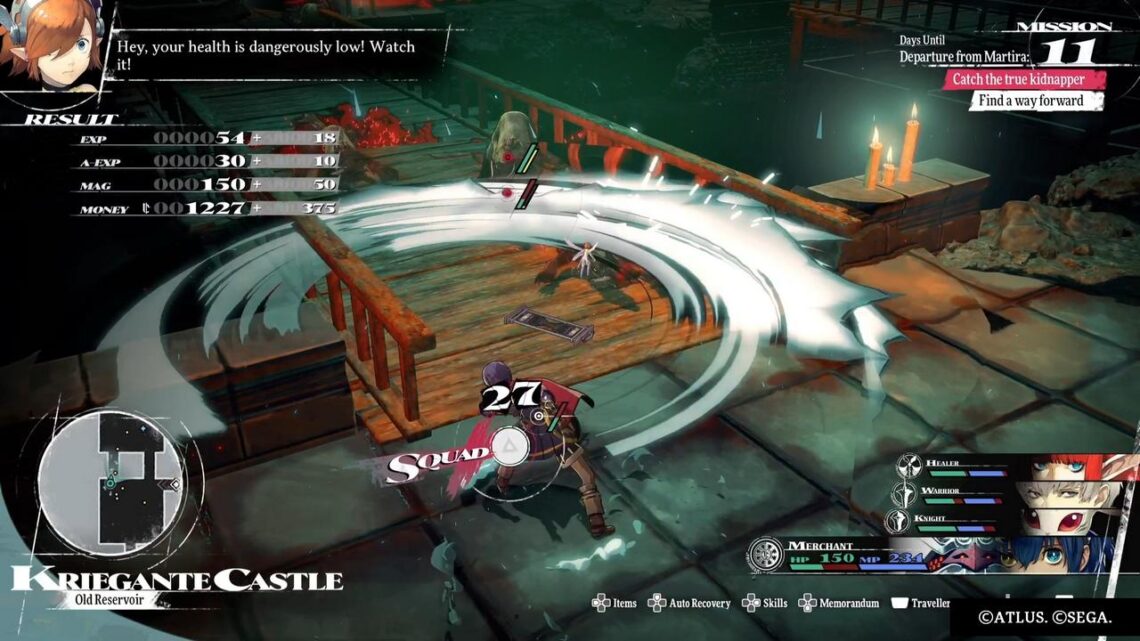
Mobile targets will also move more flexibly, sometimes hiding and actively ambushing players. If they don’t dodge in time, they will be ambushed, losing the first turn in Squad Battle.
Another notable improvement is that when conducting Squad Battle, characters can be arranged in rows in the front and back, providing tactical benefits such as increasing or decreasing the ability to deal and receive physical damage, or some types of magic can only be cast from the back row.
But the most prominent feature that completely separates Metaphor: ReFantazio from its predecessors is the Archetype job system, similar to the Fire Emblem series or classic Final Fantasy games.
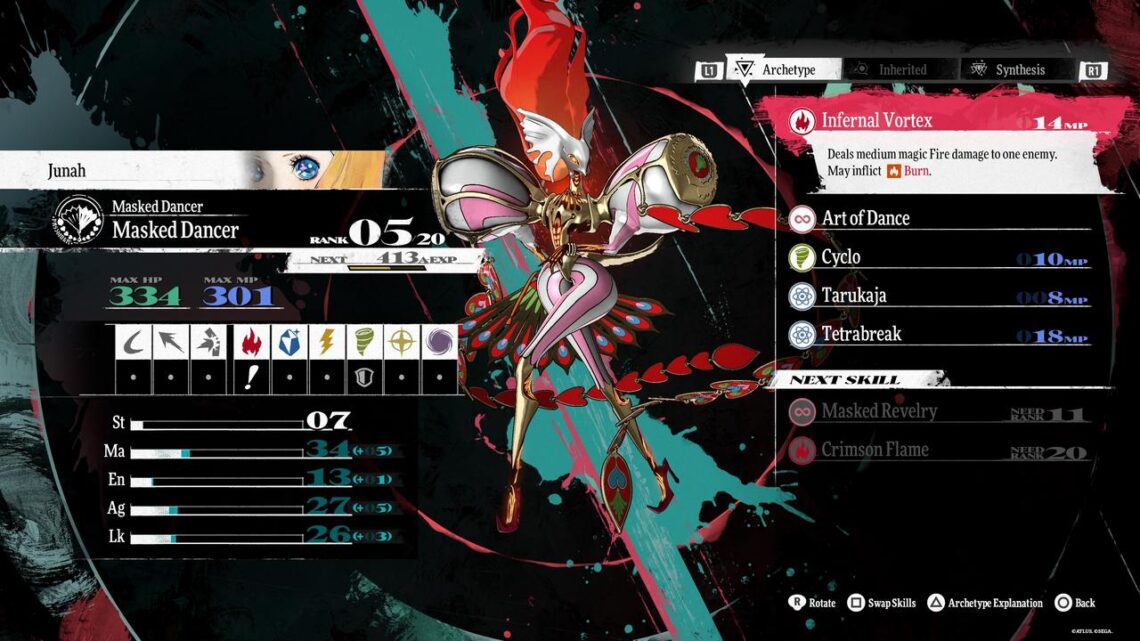
Instead of summoning “disciples” to attack or use magic, each character can now equip themselves with a separate group of jobs, from basic ones like Warrior, Mage, Gunner, to more advanced jobs like Samurai, General, or Ninja.
Each Archetype will have its own skill and equipment table, and once a character has mastered an Archetype, they can inherit some of those skills to another Archetype branch, creating many flexible and interesting job group builds, such as an Assassin who can use both the long-range gun skills of a Marksman and debuff spells.
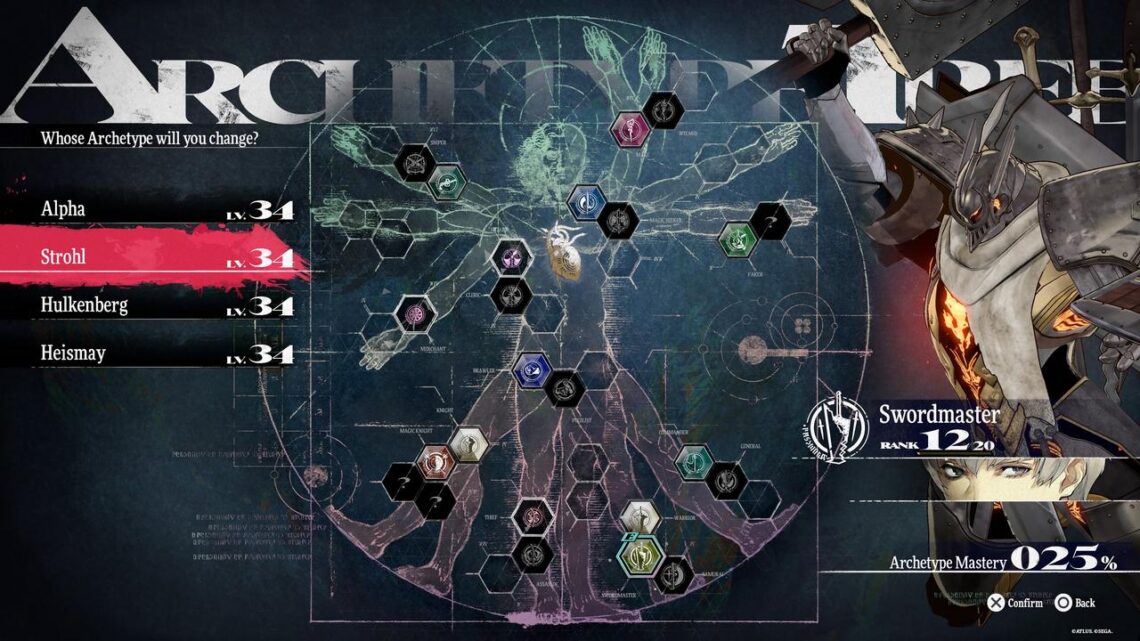
Some Archetypes will be “unlocked” automatically through the storyline, but most players will need to make friends with Followers (as the author mentioned), to have more cool and “powerful” options.
Notably, the Archetype will not be limited to a single character. For example, Hulkenberg starts with the Knight Archetype when joining the party, but players can immediately switch to the magic system or turn her into a Healer to specialize in healing and supporting teammates.
Flexibility in switching and building the Archetype’s skill set is the key factor to overcome the challenges in the game.
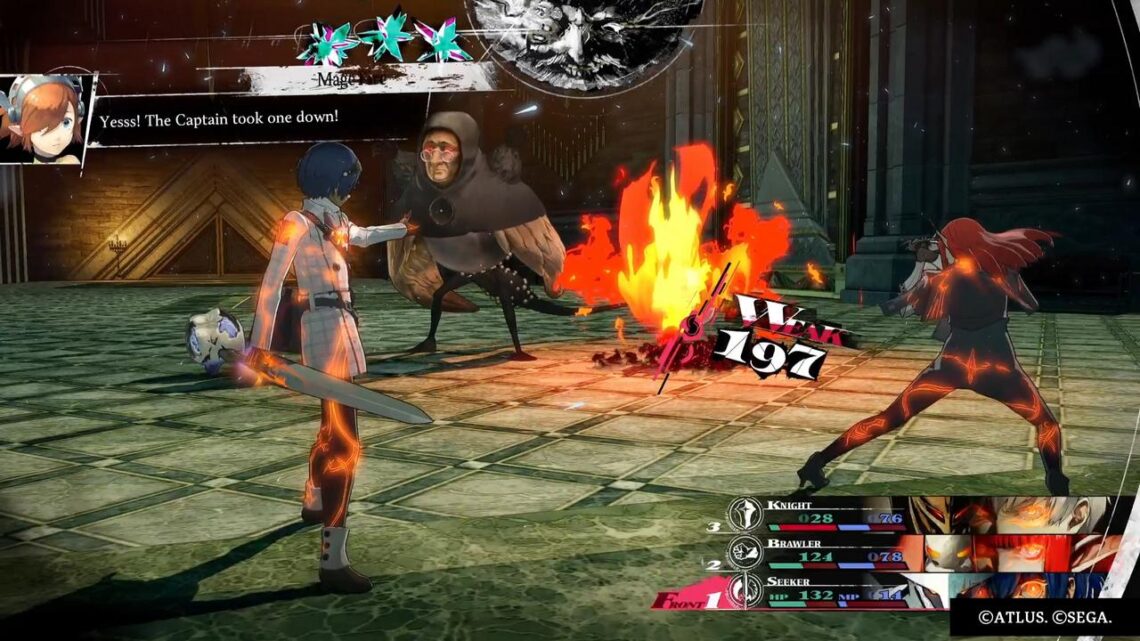
For example, once the writer boldly entered a dungeon where all the characters were “battle-type” (Slash, Pierce, Strike) but did not expect the monsters inside to be equipped with physical damage resistance spells, so the whole team was “beaten up” without being able to do anything.
But after returning to the city to “heal”, carefully studying their weaknesses through the Information Brokers and rearranging the team properly, the return trip was as simple as… a walk in the park.
In the early stages, players must enter a haunted room called “Akademia” (if you hear it familiar, yes, this is another version of Velvet Room – NV) to edit and equip Archetypes, but later on, after making friends with many Followers, they can not only do this anywhere but also combine many Archetypes together in battle to perform synergy skills (Synthesis Skill), which can end the turn sooner but in return, cause huge damage or “debuff” bad status on the opponent on a large scale.
Flexibility in switching and building the Archetype’s skill set is the key factor to overcome the challenges in the game.
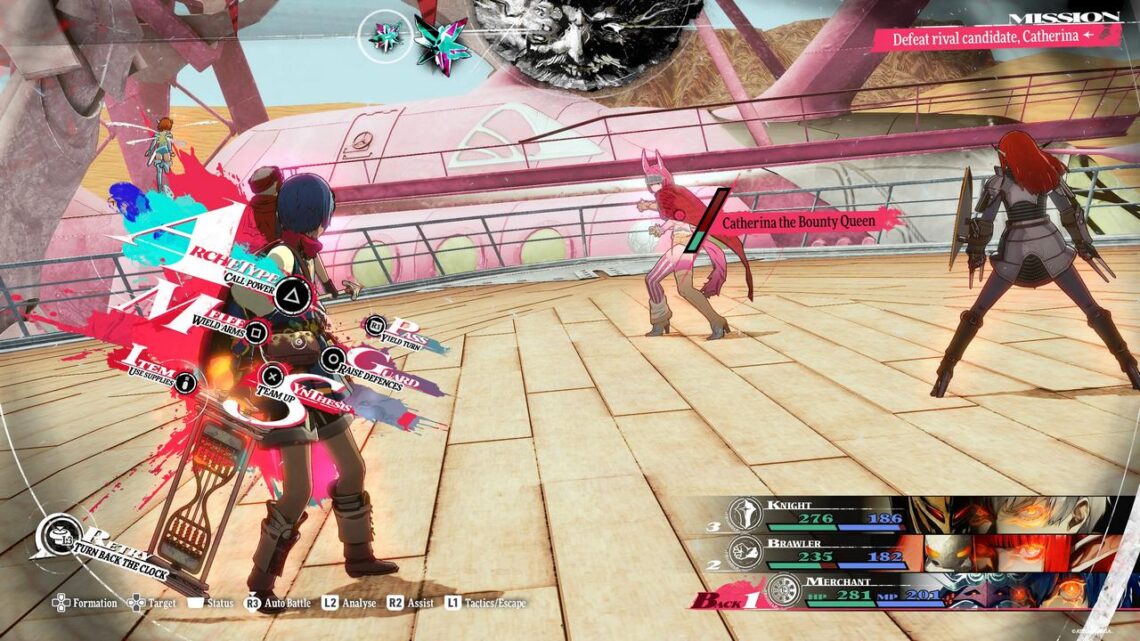
Perfect in almost every aspect
In addition to the depth of gameplay and an engaging storyline, the Metaphor: ReFantazio development team also paid close attention to other details that enhance the gaming experience.
Writers can spend hours in front of the screen just reading information in an encyclopedia (Memorandum), learning more about the depth of history (Lore) or interesting details such as the unique culture of each tribe, or the perpetual calendar in the kingdom of Euchronia with only 5 days in a week.
Familiar enemies in the world of Shin Megami Tensei such as angels, demons or notorious demigods in myths of many countries are also replaced by creatures typical of fantasy novels such as Goblins, Undead zombies or Ogres, more interesting are the bosses called “Humans” but have a strange and giant appearance, reminding the writer of the Titans in the anime Attack on Titan (about their origin, please keep it a secret for readers to discover for themselves).
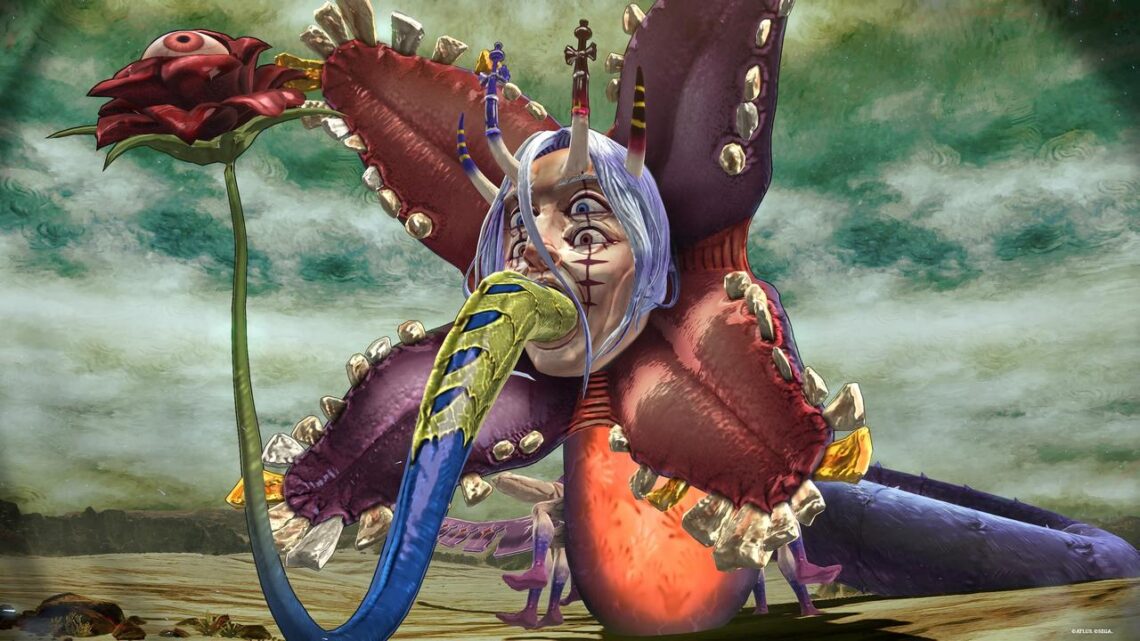
The game’s difficulty is also reasonably balanced, not too strict to the point of making players easily “overwhelmed” like the “mainstream” Shin Megami Tensei games , but also not as gentle and “emotional” as Persona 5.
At Normal level, players will still need to optimize their team and Archetype groups, increase the main character’s stats appropriately, and exploit the opponent’s weaknesses to the fullest. Otherwise, “breaking the battle” can happen at any time. As for higher difficulty levels such as Hard or Regicide, the difficulty level really reaches the level of… “Dark Souls”!
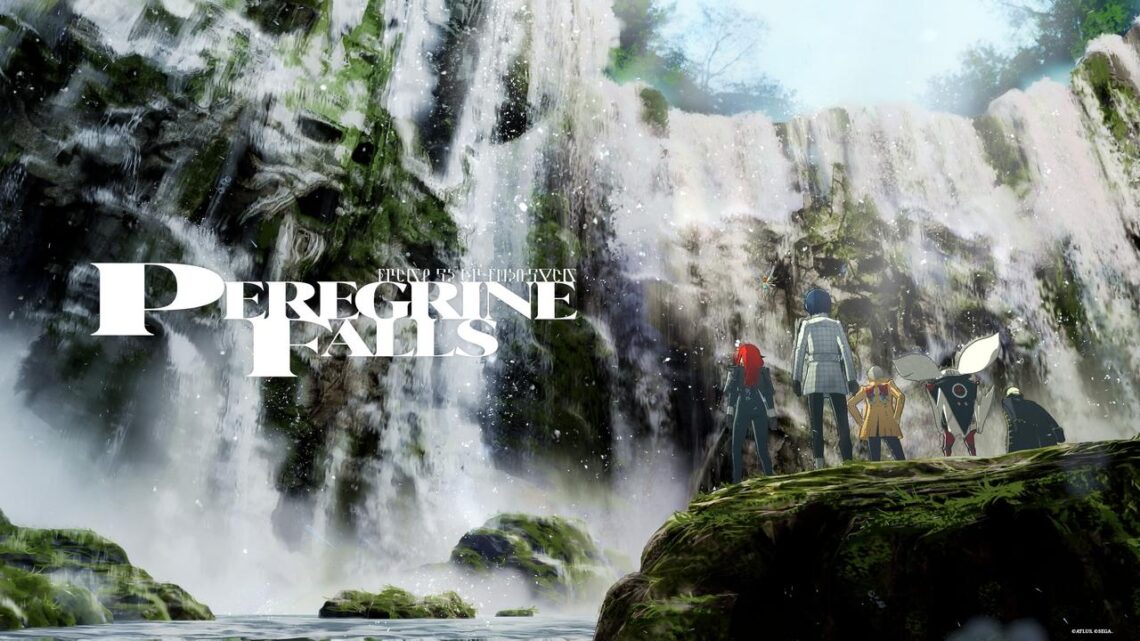
Another factor that surprised the writer was that under the skillful hands of the musical “wizard” Shoji Meguro, the main melodies in the game use choirs combined with ancient chanting, both unique and strange but extremely “catchy”, completely opposite to the Hip-Hop, J-POP or Jazz genres in Persona 3,4,5 before.
Metaphor: ReFantazio is also one of the few JRPGs that the author recommends readers to set up English Audio. Not only to reduce the burden of reading subtitles, but also because the game’s setting takes place in locations modeled after the United Kingdom and the voice actors do a great job of expressing the local accents and many slangs here that the Japanese version may not fully convey.
The game’s difficulty is also reasonably balanced, not too strict to the point of making players easily “overwhelmed” like the “official” Shin Megami Tensei games .
YOU WILL HATE
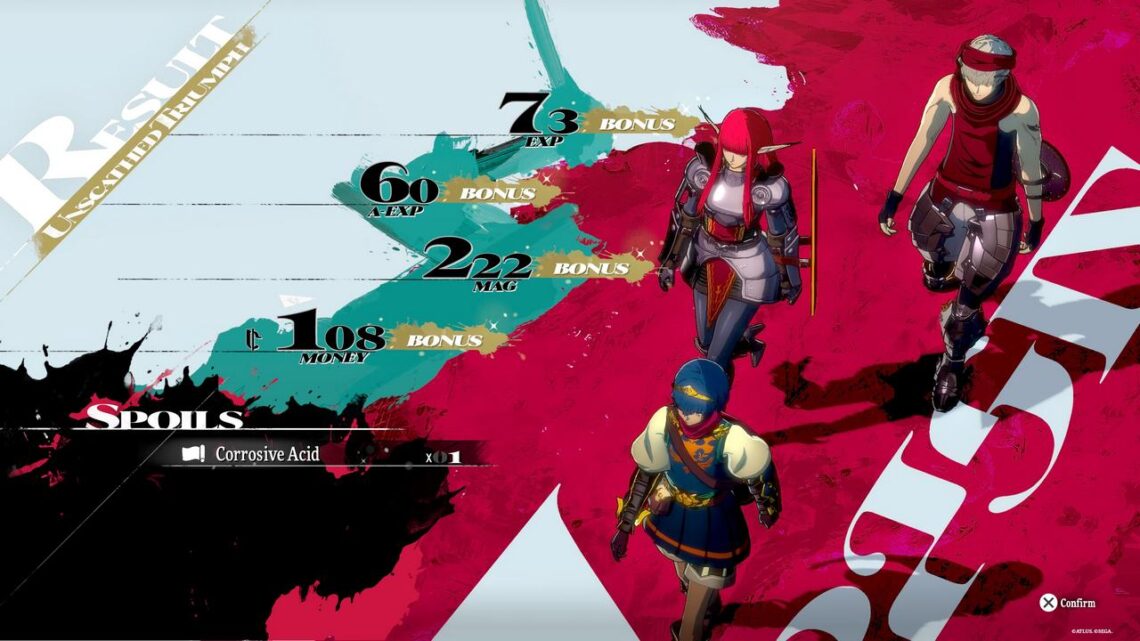
Graphics are not adequate
There’s no denying that Metaphor: ReFantazio has excellent art direction, excelling in 2D design, from UI/UX interfaces, loading screens to character portraits, all bearing the talented mark of artist Shigenori Soejima.
However, the game’s 3D graphics are not really up to par, despite the advantage of reusing the engine developed from Persona 5 (according to analysis from the famous technical channel Digital Foundry – NV), a game that was born in the era of… PS3.
The most obvious evidence is when the player’s character moves in outdoor areas, many technical limitations begin to show: anti-aliasing is almost non-functional, leading to a phenomenon of edges seen from a distance that flickers and hurts the eyes, while shadow effects and material surfaces (texture) in many areas are still very rough.
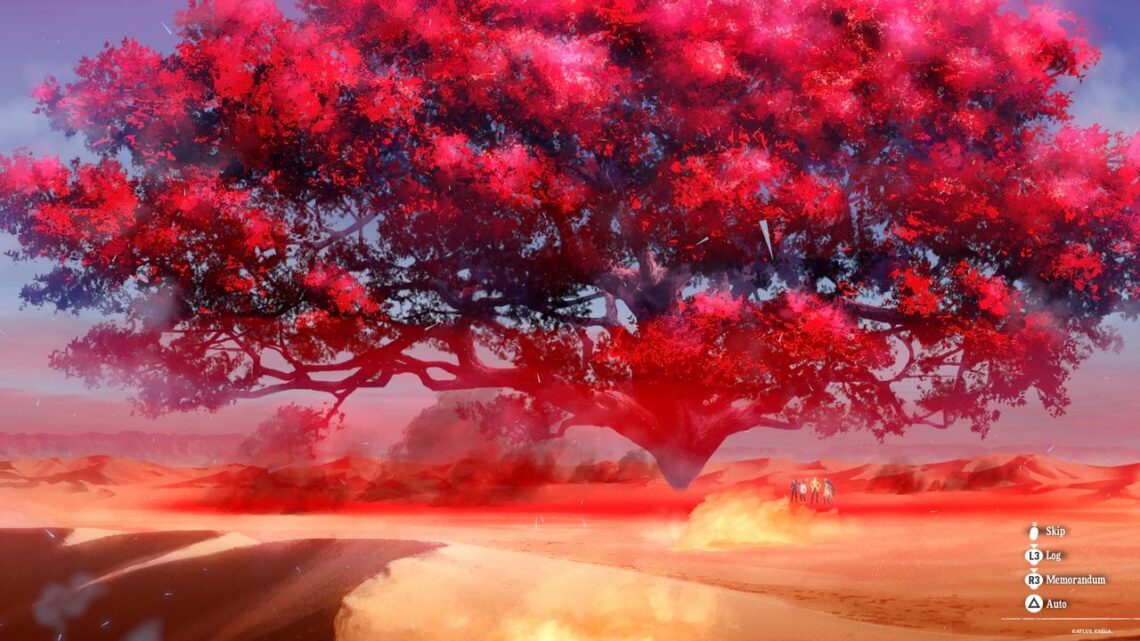
However, the most serious problem lies in optimizing performance when the game’s frame rate (fps) fluctuates continuously even when the camera is in a static state.
And perhaps because the production cycle of Metaphor: ReFantazio lasted too long, since the Project Re Fantasy project had just begun to “conceive”, not only the image quality but also the animation of the 3D characters was somewhat behind that of a recent remake game by Atlus, using the Unreal 4 engine platform: Persona 3 Reload.
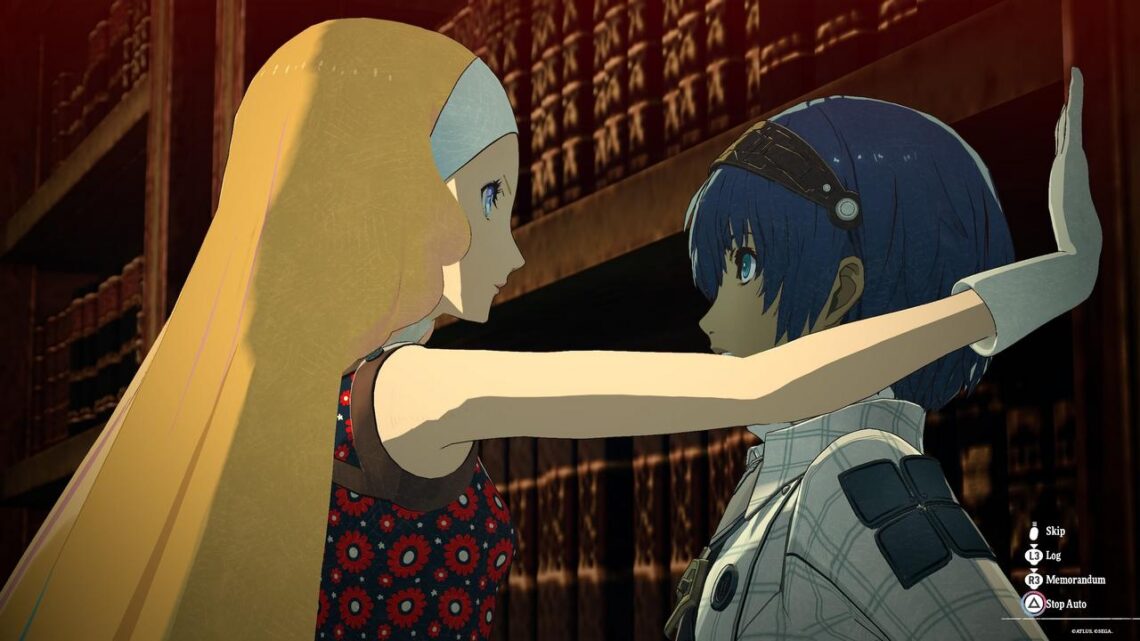
Another regrettable point that many fans, including the writer, will probably find a bit disappointing: the game does not have the option to build a romantic relationship (Romance) with the characters, meaning that the player’s main character can only forever be… “good friends” with “waifu” like Hulkenberg or Catherine.
It should also be noted that like many other turn-based JRPGs, the opening of Metaphor: ReFantazio is slow-paced, with lots of dialogue and long cutscenes, sometimes more than half an hour just to… watch a movie. This may make those who love Western RPG style or games with fast-paced, real-time combat mechanics (like Bandai Namco ‘s Tales series ) feel uncomfortable.
The most serious problem lies in optimizing performance when the game’s frame rate (fps) fluctuates continuously even when the camera is in a static state.
